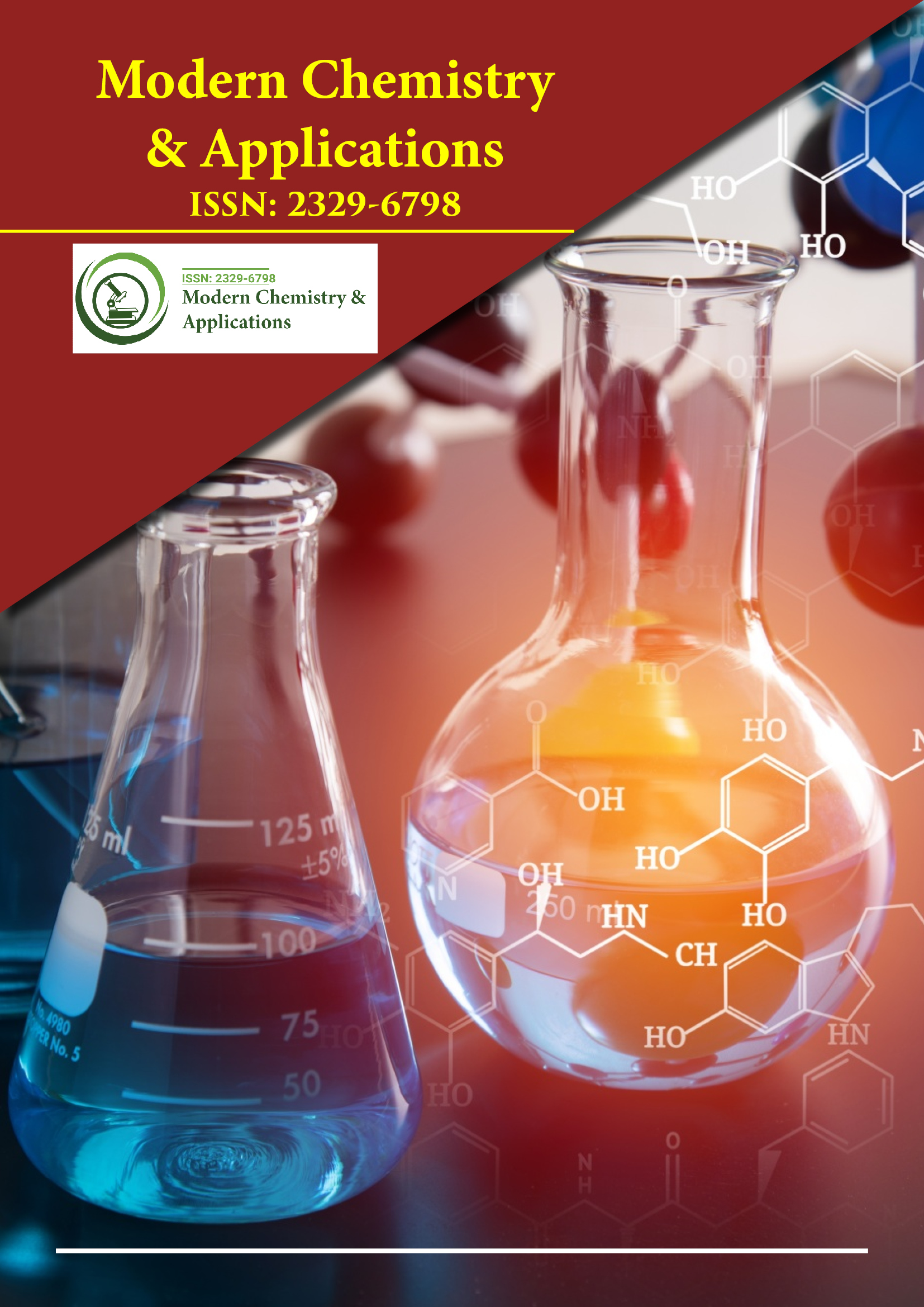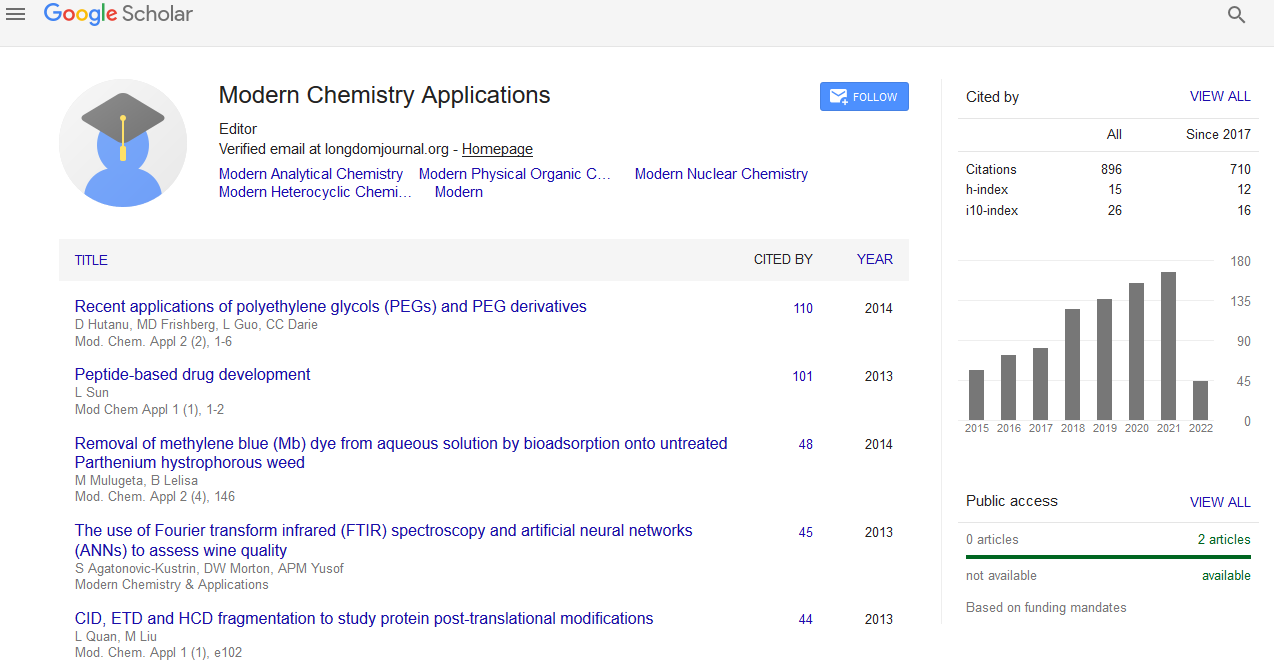Indexed In
- Open J Gate
- JournalTOCs
- RefSeek
- Hamdard University
- EBSCO A-Z
- OCLC- WorldCat
- Scholarsteer
- Publons
- Geneva Foundation for Medical Education and Research
- Google Scholar
Useful Links
Share This Page
Journal Flyer

Open Access Journals
- Agri and Aquaculture
- Biochemistry
- Bioinformatics & Systems Biology
- Business & Management
- Chemistry
- Clinical Sciences
- Engineering
- Food & Nutrition
- General Science
- Genetics & Molecular Biology
- Immunology & Microbiology
- Medical Sciences
- Neuroscience & Psychology
- Nursing & Health Care
- Pharmaceutical Sciences
Carbon dot - Unique reinforcing filler for polymer with special reference to physico-mechanical properties
5th Global Chemistry Congress
September 04-06, 2017 | London, UK
Dinesh Kumar Kotnees, P R Sreenath, Seema Singh, M S Satyanarayana and Prolay Das
Indian Institute of Technology, Patna, India
Posters & Accepted Abstracts: Mod Chem Appl
Abstract:
This work reports the reinforcing efficiency of carbon dots (CDs) in carboxylated acrylonitrile butadiene (XNBR) latex at very low concentration. Amine and carboxyl functionalized CDs have been synthesized from citric acid and glycine. The CDs are covalently conjugated to XNBR latex using 1-(3-dimethylaminopropyl)-3-ethylcarbodiimide hydrochloride (EDC.HCl) and N-hydroxysuccinimide (NHS) as coupling agents. The covalent conjugation of CDs with XNBR latex has been confirmed by Fourier transform infrared spectroscopy (FTIR), dynamic light scattering (DLS) and X-ray photoelectron spectroscopy (XPS). The optical properties of CDs and XNBR-CDs conjugate have been characterized by ultraviolet (UV) - visible, fluorescence spectroscopy, time-resolved fluorescence spectrophotometer and haze meter. The tensile stress-strain properties of XNBR latex dramatically increases by the addition of CDs to XNBR latex. The maximum tensile stress of 2 phr of CDs loaded XNBR latex is nearly 215 % higher than the maximum tensile stress of neat XNBR latex. There is a concomitant decrease in the tan δ peak height and increase in the tan δ peak temperature of XNBR latex with the incorporation of CDs to XNBR latex. In addition, the storage modulus (G') value of sample containing 2 phr of CDs is 161 % higher than the storage modulus value (G') of neat XNBR latex. The onset of degradation temperature (Ti) value of sample containing 4 phr of CDs is 40 �?�C higher than the Ti value of neat XNBR latex. On the other hand, the maximum degradation temperature (Tmax) of XNBR latex containing 1 phr of CDs is 11 �?�C higher than the Tmax value of neat XNBR latex. Morphology of pristine CDs and XNBR-CDs conjugate has been analyzed using transmission electron microscopy (TEM). To the best of our knowledge, this is the first report which analyzes the effect of CDs on the physico-mechanical properties of elastomer contrary to the other novel fillers of carbon family.


